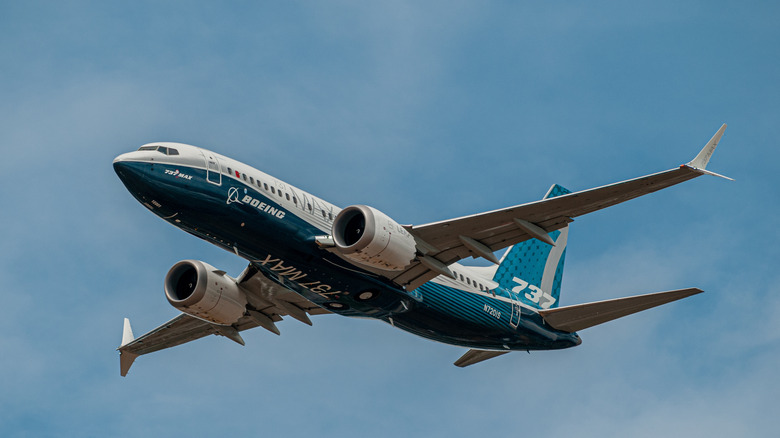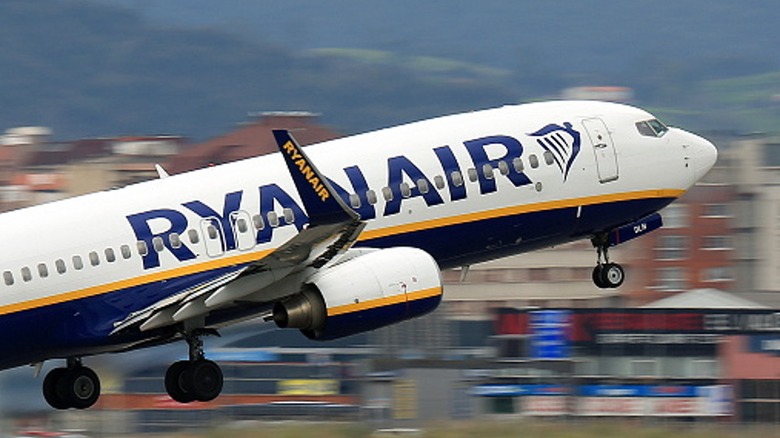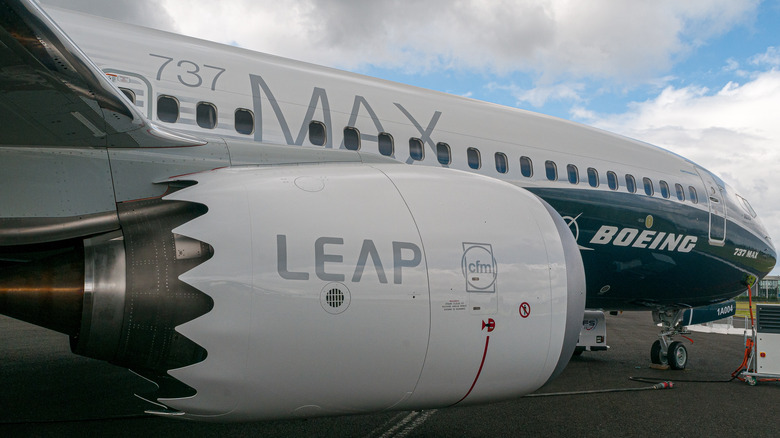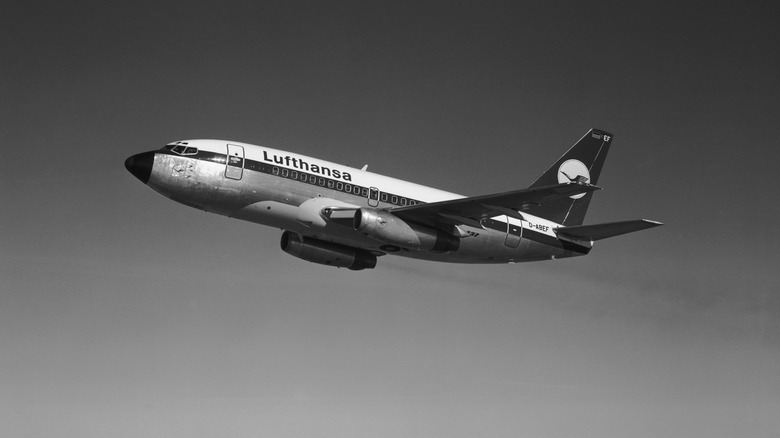How Much A Boeing 737 Weighs (And Its Maximum Takeoff Weight)
The 737 series of planes is Boeing's most popular jetliner and one of the best jets Boeing has ever made. Over the years, the 737 has gone through multiple generations, starting with the 737-100 in 1967, all the way up to the current 600 through 900ER models. It was designed with many of the same components as Boeing's 727, giving pilots and mechanics some familiarity.
The 737 received an upgrade in the mid-90s with what Boeing called the Next Generation (NG) 737, giving the plane transcontinental capabilities. This included four different sizes of the 737, with the smallest being the 737-600 and the largest being the 737-900ER. These, along with its fourth generation (737 Max), are the current models airlines fly today.
Along with all the different sizes and features of these planes, each one varies in weight. Furthermore, jetliners have different categories of weight. There's the standard empty weight, which adds up the sum of the airframe, all fixed operating equipment, unusable fuel, and all operating fluids. There's also the maximum zero fuel weight, which is exactly what it sounds like: the weight of the plane without any fuel in its tanks.
We'll be looking at the zero fuel weight of these planes, giving you an idea just how different in size each of them is. We also want to look at the maximum takeoff weight to get an idea of just how much each plane can carry and still get off the ground.
The Next Generation 737s are heavy jetliners
Boeing's Performance Summary for the 737 breaks down every little aspect of the NG 737s, from their passenger count to how much fuel each one can hold. When it comes to the 737-600, the smallest of the four NG models, it has a zero fuel weight of 113,500 lbs. and can hold up to 6,875 gallons of fuel.
When it's time for takeoff, it can hold as much as 124,000 lbs., including fuel. With enough space for 110 passengers plus their luggage, some very precise math is necessary to make sure the airline can get off the tarmac. A plane's maximum takeoff weight is determined by the manufacturers taking into account multiple variables, such as the power the engines produce and the wings' surface area. If an airplane exceeds its maximum weight, it puts it and the passengers at risk.
The next size up is the 737-700, which holds 126 passengers and weighs 120,500 lbs. without fuel, 7,000 lbs. more than its smaller sibling. The 700 has some leeway with its takeoff weight, as it can weigh as much as 133,000 lbs. Meanwhile, the 737-800 weighs more than that without fuel at 136,000 lbs. For takeoff, it can safely weigh 155,500 lbs.
The 737-900ER (Extended Range) is the largest NG derivative, weighing 141,300 lbs. without fuel. To safely take off, it can weigh up to 164,000 lbs.
The 737 Max planes are even heavier
Boeing built the 737 MAX jet to replace the NG iterations. They're the plane's fourth generation and put the MAX in maximize, as they maximize the amount of weight they can carry.
Just as there were four different sizes of the NG generation, there are four MAX models, from the MAX 7 to the MAX 10. However, there have been certification issues, grounding some of the MAX planes until FAA approval. That's not going to stop us from talking about how heavy they are and their takeoff weight, though.
The smallest of the newest generation is the MAX 7, with a zero fuel weight of 138,700 lbs., 25,200 lbs. heavier than its 737-600 counterpart. To safely take off from a runway, it can weigh a maximum of 177,000 lbs.
Next up, there's the Max 8, weighing 145,400 lbs. with a maximum takeoff weight of 181,200 lbs.
Finally, there's the MAX 9, which can't weigh any more than 194,700 lbs. to take off; otherwise, it risks not being able to climb fast enough to clear any obstacles. When its fuel tanks are empty, it only comes in at 156,500 lbs.
The 737 MAX 10 is the largest of the family. However, Boeing doesn't offer any official numbers regarding weight capacity, and details are scarce as it hasn't been certified by the FAA as of this writing. Reuters reported in March 2024 that Max 10 deliveries are expected to be delayed until 2027. What we do know is that the Max 10's larger size means it will have a larger zero fuel weight and maximum takeoff weight, but anything else is speculation.
Newer generations are capable of carrying a lot more weight than their predecessors
The 737 has come a long way since its debut. The maximum zero fuel weight for an original 737-100 is 81,700 lbs., nearly 32,000 lbs.. less than the 737-600, and its maximum takeoff weight is a measly 97,000 lbs.. Granted, its seating capacity was nowhere near what modern versions are, and it was only 94 feet long.
The 737-200 wasn't any better, with its zero fuel weight of 85,000 lbs. and takeoff capacity of 100,000 lbs.. There was only a 3,300 lb. difference between the originals, while the difference between the smallest MAX and the next size up is nearly 7,000 lbs. Looking at the first iteration of the plane and putting it up against the smallest of the MAX versions, the newest generation is 57,000 lbs. heavier and can lift off with 80,000 lbs. more.
Planes today need to accommodate more passengers and cargo (especially for military-owned aircraft). More people are flying today than were in 1970, according to the Smithsonian. Today, the FAA reports that it handles 45,000 flights a day, on average, while Statista shows that flights per day have nearly doubled since 2004 alone.



